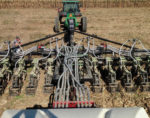Chopped Corn Residue Helps Ensure Complete Nutrient Release
A combination of chopping corn residue and applying a biocatalyst can result in better residue breakdown and higher corn yields, says work from the University of Illinois.
Read More



.png?height=125&t=1731942302&width=150)




